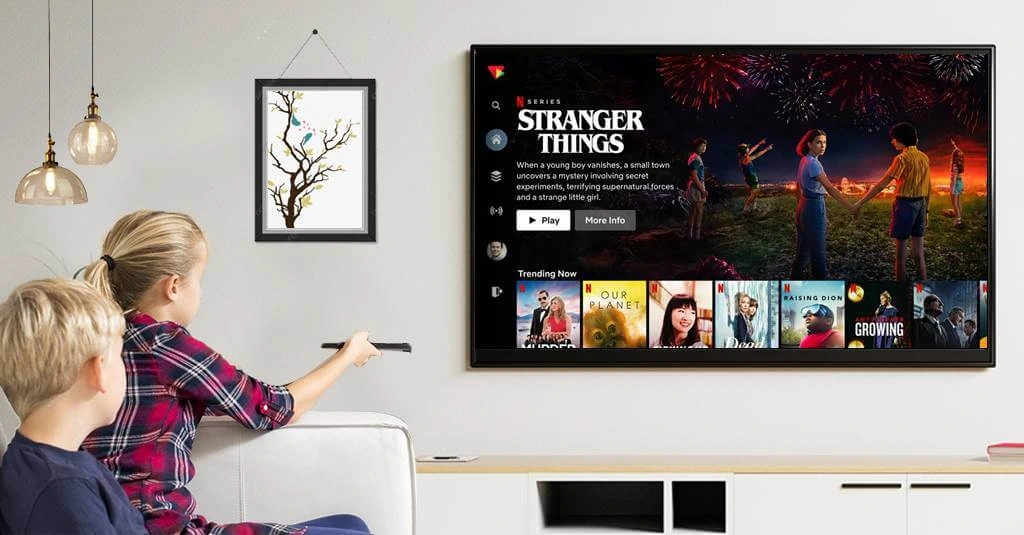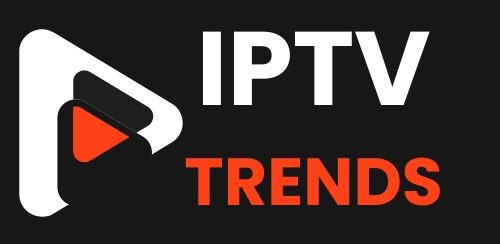Introduction

Understanding IPTV
In the realm of digital entertainment, IPTV (Internet Protocol Television) has emerged as a revolutionary technology, allowing users to stream media content over the internet instead of traditional methods like satellite or cable. Unlike conventional television broadcasting, which relies on scheduled programming, IPTV enables viewers to access their favorite shows, movies, and live events on-demand, enhancing flexibility and convenience.
Evolution of IPTV Trends Devices
Initially, IPTV was limited to desktop computers and laptops, but with advancements in technology, dedicated IPTV devices have become increasingly popular. These devices offer seamless integration with televisions, providing a more immersive viewing experience.
Importance of IPTV Trends Devices
Convenience and Accessibility
One of the primary advantages of IPTV Trends devices is their convenience. Users can access a vast array of content from the comfort of their living rooms, eliminating the need for multiple subscriptions or external hardware. Additionally, IPTV devices are portable, allowing users to enjoy their favorite shows on the go.
Variety of Content
IPTV devices offer access to a diverse range of content, including movies, TV shows, sports events, and international channels. With customizable channel packages and on-demand libraries, users can tailor their viewing experience to suit their preferences.
Cost-Effectiveness
Compared to traditional cable or satellite TV subscriptions, IPTV services often provide more value for money. Many IPTV providers offer competitive pricing plans with no long-term contracts, allowing users to pay only for the content they consume. Additionally, IPTV devices eliminate the need for expensive set-top boxes or installation fees.
Types of IPTV Trends Devices
Set-Top Boxes
Set-top boxes are dedicated devices that connect to a television and enable IPTV streaming. These devices typically come pre-installed with IPTV applications and offer features like 4K resolution support, HDMI connectivity, and remote control functionality.
Smart TVs
Many modern televisions come equipped with built-in IPTV capabilities, allowing users to stream content directly without the need for external devices. Smart TVs offer a seamless viewing experience, with intuitive interfaces and access to popular streaming apps.
Media Streaming Devices
Media streaming devices like Roku, Amazon Fire Stick, and Apple TV are popular choices for IPTV enthusiasts. These compact devices connect to a TV via HDMI and provide access to a wide range of streaming services, including IPTV providers.
Examples: Roku, Amazon Fire Stick, Apple TV
Features to Look For
High Definition Support
When choosing an IPTV device, it’s essential to consider its support for high-definition content. Look for devices that offer 4K resolution support and HDR capabilities for the best viewing experience.
User-Friendly Interface
An intuitive user interface is crucial for navigating through the vast array of content available on IPTV platforms. Look for devices with easy-to-use menus, customizable layouts, and voice control options for added convenience.
Streaming Quality and Stability
Reliable streaming quality is essential for uninterrupted viewing. Look for IPTV devices with robust hardware and network connectivity to ensure smooth playback without buffering or lag.
How IPTV Trends Devices Work
Internet Connection
IPTV devices rely on a stable internet connection to stream content. Whether through Wi-Fi or Ethernet, a high-speed internet connection is necessary for optimal performance.
Content Delivery
IPTV content is delivered to the user’s device via internet protocols, such as HTTP or UDP. Content is typically transmitted in real-time or on-demand, depending on the user’s preferences.
Interactive Features
Many IPTV devices offer interactive features like pause, rewind, and fast-forward, allowing users to control their viewing experience. Some devices also support interactive applications and gaming, enhancing entertainment options.
Setting Up IPTV Devices
Connection Methods
Setting up an IPTV device is relatively straightforward. Simply connect the device to your TV via HDMI, connect to your home network, and follow the on-screen instructions to complete the setup process.
Subscription and Account Setup
To access IPTV content, users typically need to subscribe to a service provider and create an account. Once subscribed, users can log in to their account on the IPTV device and access their favorite channels and content.
Customization Options
IPTV devices offer various customization options, allowing users to personalize their viewing experience. From creating custom channel lists to setting parental controls, users have control over their content preferences.
Comparison with Traditional Cable TV
Flexibility
Compared to traditional cable TV, IPTV offers greater flexibility in terms of content selection and viewing options. With IPTV, users can choose from a wide range of channels and on-demand content, eliminating the need for rigid programming schedules.
Content Options
IPTV provides access to a more extensive range of content than traditional cable TV, including international channels, niche programming, and exclusive content. With IPTV, users have access to a diverse array of entertainment options tailored to their interests.
Cost Comparison
In many cases, IPTV services are more cost-effective than traditional cable TV subscriptions. With no long-term contracts and flexible pricing plans, users can save money by only paying for the content they consume, rather than a fixed monthly fee.
Future IPTV Trends in IPTV Devices
Integration with AI and Voice Assistants
As technology continues to evolve, IPTV devices are integrating with AI and voice assistants to enhance the user experience. Voice-controlled navigation, personalized recommendations, and intelligent search capabilities are becoming increasingly common features in IPTV devices.
Enhanced Streaming Quality
Advancements in hardware and network technology are improving the streaming quality of IPTV devices. With support for higher resolutions, faster frame rates, and improved compression algorithms, IPTV devices are delivering a more immersive viewing experience than ever before.
Interactive Viewing Experiences
The future of IPTV devices lies in interactive viewing experiences. From augmented reality overlays to gamified content, IPTV devices are transforming passive viewing into interactive entertainment, engaging users in new and exciting ways.
Security Concerns and Solutions
Privacy Risks
Like any internet-connected device, IPTV devices are susceptible to privacy risks, such as data breaches and hacking. To mitigate these risks, users should ensure their devices are regularly updated with the latest security patches and use strong passwords to protect their accounts.
Content Piracy
Content piracy is a significant concern in the IPTV industry, with illegal streaming services and unauthorized distribution channels undermining the legitimate content ecosystem. To combat piracy, content providers and device manufacturers are implementing encryption and digital rights management (DRM) solutions to protect copyrighted content.
Encryption and DRM Solutions
Encryption and DRM solutions are essential for safeguarding IPTV content against unauthorized access and distribution. By encrypting content streams and implementing robust DRM technologies, content providers can protect their intellectual property and ensure a secure viewing experience for users.
Maintenance and Troubleshooting
Software Updates
Regular software updates are crucial for maintaining the security and performance of IPTV devices. Users should ensure their devices are set to automatically download and install updates to stay protected against security vulnerabilities and software bugs.
Network Issues
Network connectivity issues can disrupt IPTV streaming and cause buffering or playback errors. To troubleshoot network issues, users should check their internet connection, router settings, and device configuration to ensure optimal performance.
Device Malfunctions
In rare cases, IPTV devices may experience hardware malfunctions or software glitches that require troubleshooting. Users experiencing issues with their devices should consult the manufacturer’s support resources or contact customer service for assistance.
The Impact of IPTV on Entertainment Industry
Changing Consumer Behavior
The rise of IPTV has fundamentally changed the way consumers access and consume media content. With on-demand streaming and personalized recommendations, users have more control over their viewing experience than ever before.
Content Distribution Models
IPTV has disrupted traditional content distribution models, empowering content creators and providers to reach global audiences without the need for expensive infrastructure or licensing agreements. Direct-to-consumer streaming services are becoming increasingly popular, offering users unprecedented access to premium content.
Market Trends and Forecasts
The IPTV market is poised for continued growth in the coming years, driven by increasing internet penetration, technological advancements, and changing consumer preferences. With the proliferation of smart devices and high-speed internet connections, IPTV is becoming the preferred choice for millions of viewers worldwide.
Conclusion
IPTV devices and equipment are revolutionizing home entertainment, offering users unparalleled convenience, flexibility, and access to a vast array of content. From set-top boxes to smart TVs and media streaming devices, IPTV technology is reshaping the way we consume media content, providing a more immersive and personalized viewing experience.
As you explore the world of IPTV and its trends, consider checking out IPTV Trends, your go-to source for the latest updates and innovations in the IPTV industry.
FAQs
- What is the difference between IPTV Trends and traditional cable TV?
- Can I use IPTV Trends devices without an internet connection?
- Are IPTV devices legal?
- How can I ensure the security of my IPTV device?
- What are some popular IPTV services to use with these devices?


One Comment
[…] For more on this topic, please check out our article : https://iptvtrends.store/iptv-trends-best-devices-and-equipment-2024-a-guide/ […]